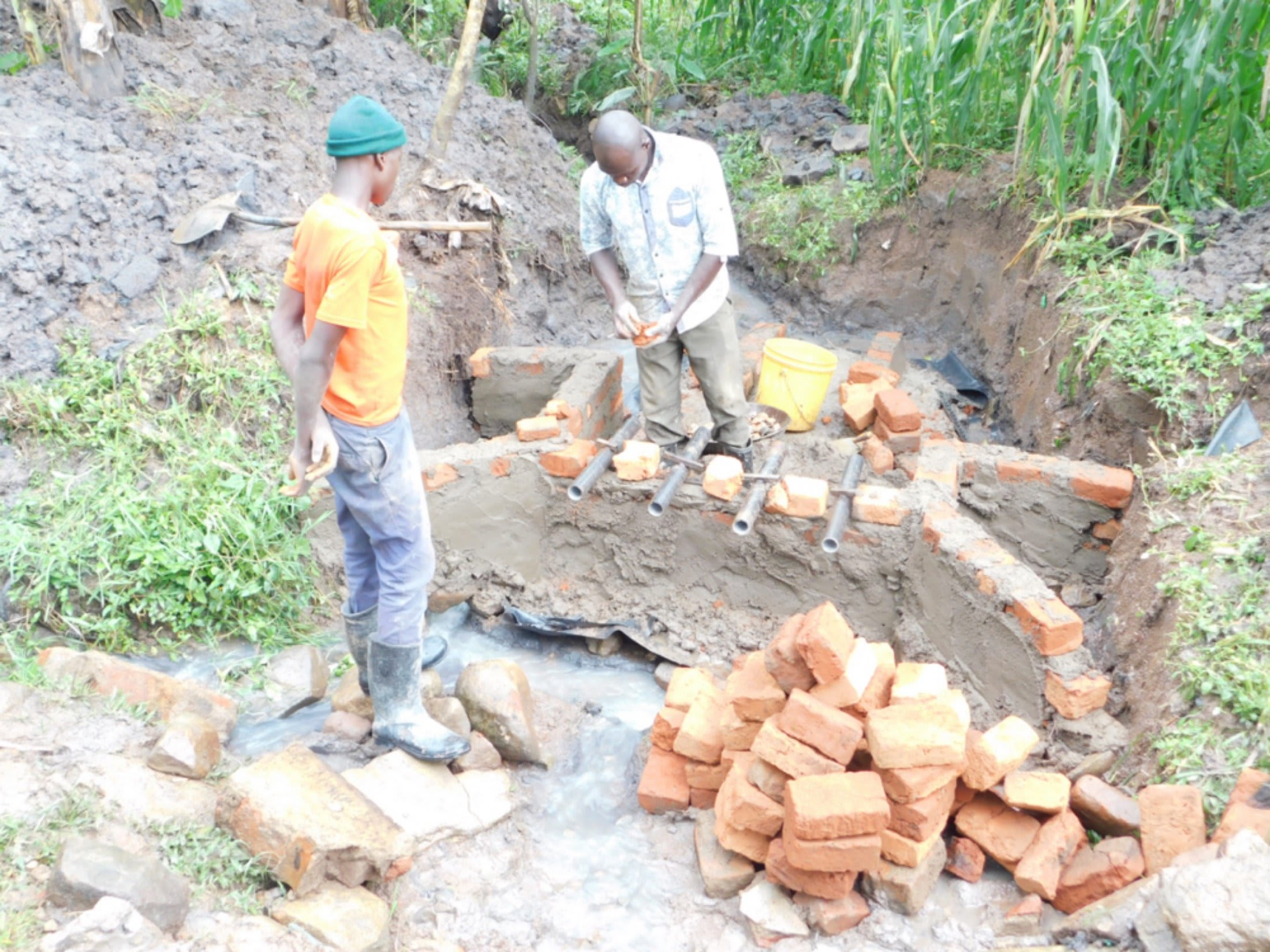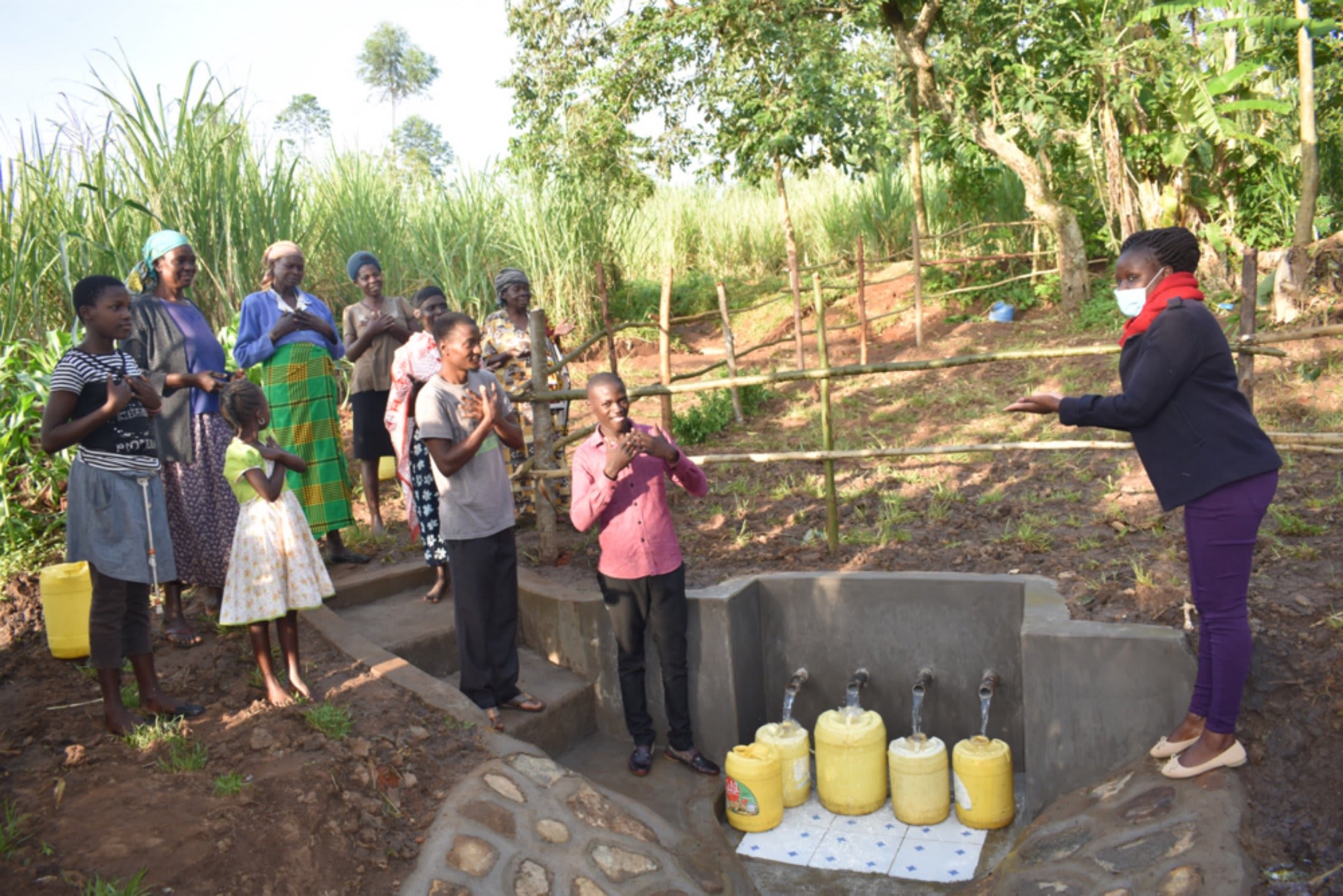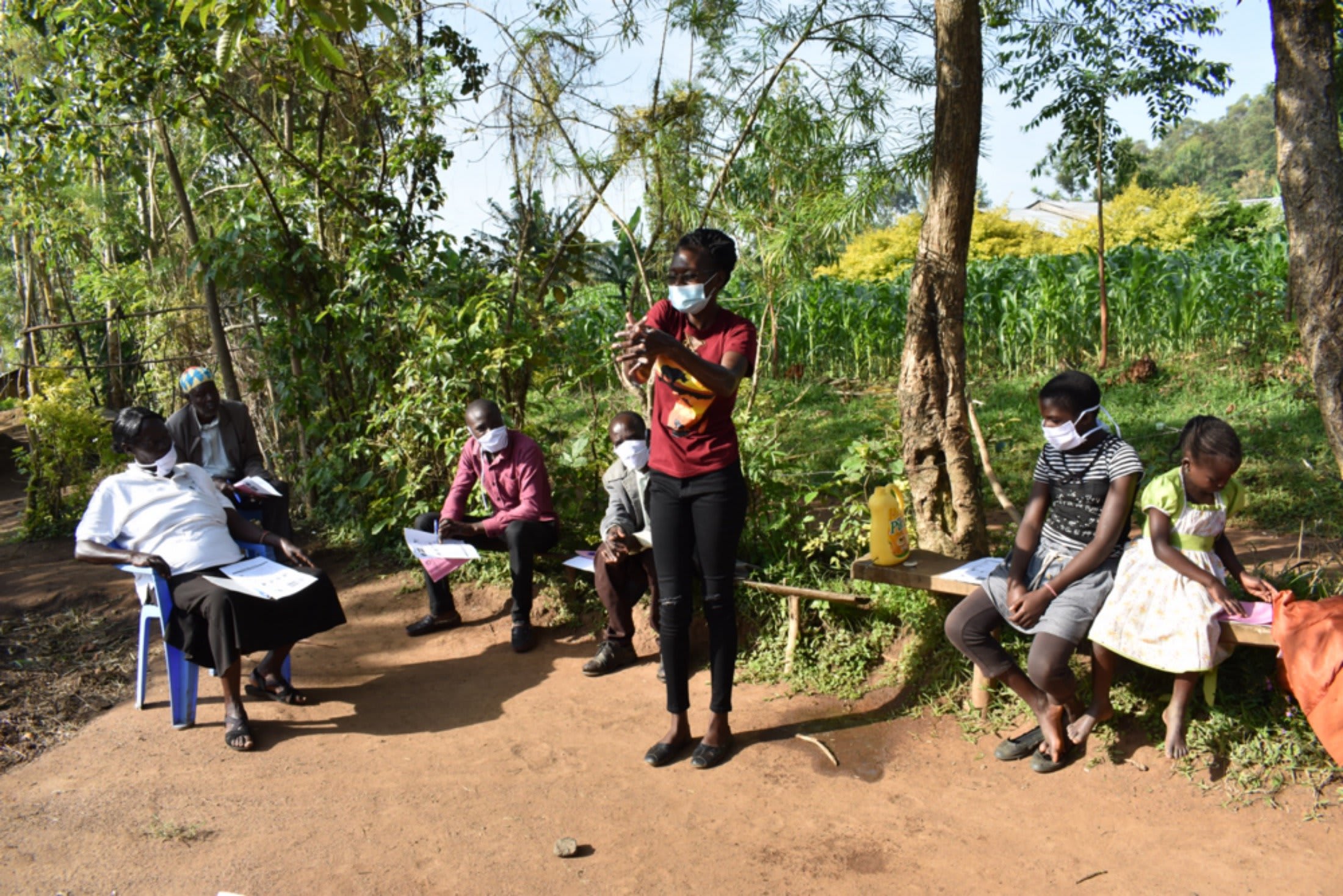Please note: original photos were taken before the COVID-19 pandemic.
Eshimuli is a very cool and vegetated area with minimal shops around. The roads leading to the village are made of packed clay and gravel with potholes in some places along the way. Most of the houses here are semi-permanent.
560 people in Eshimuli depend on Mbayi Spring for all of their daily water needs. The 2 biggest challenges they face at the spring are contaminated water and difficulty accessing the water.
Unprotected Mbayi Spring looks like just a small muddy puddle. The area leading up to the spring is slick with mud, rocks, and dead leaves. The community members have tried to form walls with the mud to capture the spring water, though a lot of it escapes on either side of the pool. To fetch water, people must gently scoop from the top of the pool with a small jug, then pour this water into the larger jerrycans they bring.
The more people who fetch water, the more mud gets stirred up in the water. There are always conflicts between children and adults at the spring, especially in the evening hours, weekends, and holidays. This is because the adults want to be the first to fetch water and rush to their other work, forgetting that even the children have also been sent to fetch water quickly before starting their house chores or homework. If the water becomes dirty from other people fetching it, others have to wait to let the water settle before they can begin scooping it. The process is time-consuming and frustrating for everyone, and tensions often run high.
In addition to dirt, runoff from the rains carries other toxins straight into the drinking water, including farm chemicals and animal waste. During the rainy season, the spring water turns brown from having so much eroded soil in it. Within the muddy and wet access area at the spring, there are flukeworms inside the water which bite people as they step inside the spring to fetch water.
The water crisis in Eshimuli paralyzes the daily schedule of almost every homestead throughout the year. Relying on unprotected Mbayi Spring impacts the women in the community since they are predominantly the ones who fetch water in each family. Community members are forced to wake up very early in the morning and make several trips to the spring to fetch water before doing anything else each day. This is to fetch the cleanest water of the day before too many people get to the spring.
Once they return home, the women take breakfast and go to the farm until lunch hour. For the rest of the day, the amount of work and chores that can be accomplished are determined by how long they have to wait at the spring in the afternoon and evening. The evening can be the spring's busiest time, delaying families' dinner and bathing routines at night. Then, the next morning before sunrise, the cycle continues.
Waterborne illnesses also impact community members' schedules, taking away precious school time from children and productive hours at work, at home, and on the farm for adults.
"Whenever I drink this water, I'm always infected by flu that leads to malaria and typhoid," said 50-year-old farmer and spring landowner Antony Mbayi.
"When I drink this water," added teenager Dorine, "I always feel stomachache and diarrhea."
Dorine expressed the most commonly reported water-related illnesses among all community members here. One time, this spring water affected almost everybody in the community at the same time, they said, an issue that led them all to seek medical attention. But hospital visits and medicines are expensive, and families often must choose between paying for this treatment or their other basic needs, such as children's school fees and farm inputs.
The choice is hardly a fair one.
What We Can Do:
Spring Protection
Protecting the spring will help provide access to cleaner and safer water and reduce the time people have to spend to fetch it. Construction will keep surface runoff and other contaminants out of the water. With the community’s high involvement in the process, there should be a good sense of responsibility and ownership for the new clean water source.
Fetching water is a task predominantly carried out by women and young girls. Therefore, protecting the spring and offering training and support will help empower the female members of the community by freeing up more of their time and energy to engage and invest in income-generating activities and their education.
Training on Health, Hygiene, COVID-19, and More
To hold training during the pandemic, we work closely with both community leaders and the local government to approve small groups to attend training. We ask community leaders to invite a select yet representative group of people to attend training, which will then act as ambassadors to the rest of the community to share what they learn. We also communicate our expectations of physical distancing and wearing masks for all who choose to attend.
The training will focus on improved hygiene, health, and sanitation habits in this community. We will also have a dedicated session on COVID-19 symptoms, transmission routes, and prevention best practices.
With the community’s input, we will identify key leverage points to alter their practices at the personal, household, and community levels to affect change. This training will help ensure participants have the knowledge they need about healthy practices and their importance to make the most of their water points as soon as the water is flowing.
Our team of facilitators will use a variety of methods to train community members. Some of these methods include participatory hygiene and sanitation transformation, asset-based community development, group discussions, handouts, and demonstrations at the spring.
One of the most important issues we plan to cover is handling, storing, and treating water. Having a clean water source will be extremely helpful, but it is useless if water gets contaminated by the time it is consumed. The community and we strongly believe that all of these components will work together to improve living standards here, which will help to unlock the potential for these community members to live better, healthier lives.
We will then conduct a small series of follow-up training before transitioning to our regularly scheduled support visits throughout the year.
Training will result in the formation of a water user committee, elected by their peers, that will oversee the spring's operations and maintenance. The committee will enforce proper behavior around the spring and delegate tasks that will help preserve the site, such as building a fence and digging proper drainage channels. The fence will keep out destructive animals and unwanted waste, and the drainage will keep the area’s mosquito population at a minimum.

 Protected Spring
Protected Spring
 Rehabilitation Project
Rehabilitation Project





































